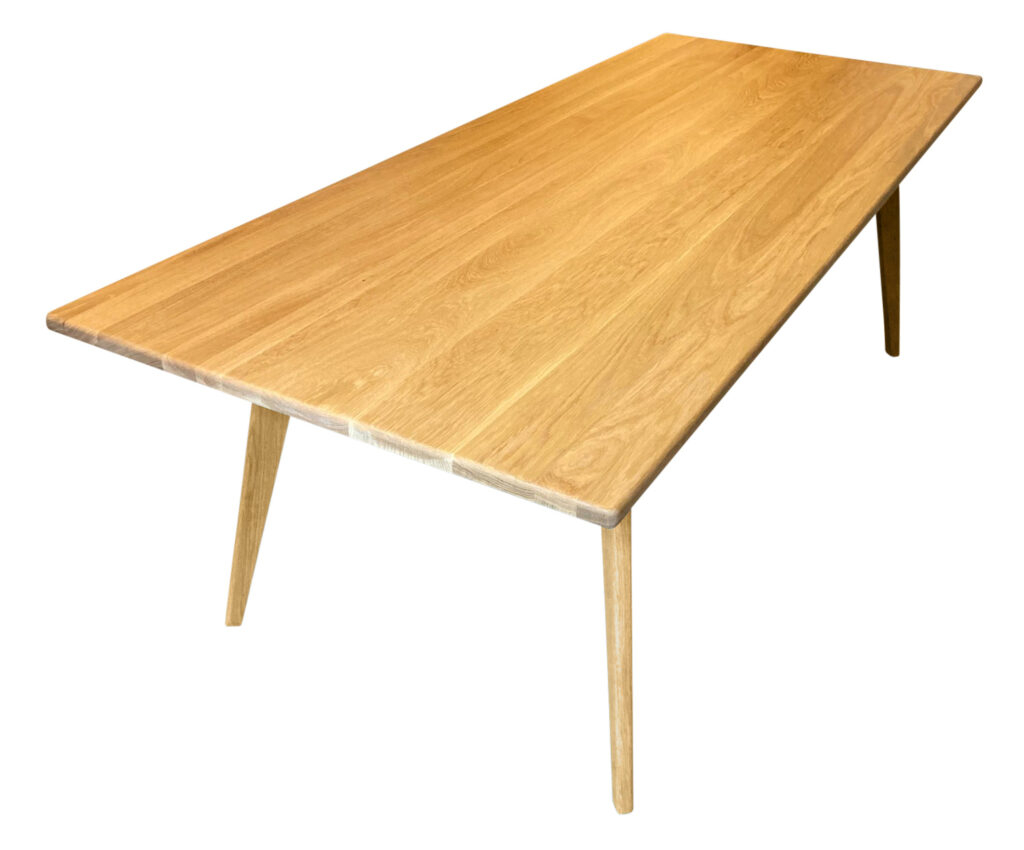Most people probably don’t think about grain direction when ordering furniture, but it is very important where solid wood is being used.
In our tables and table tops, the direction of the wood grain will always be with the longest side.
In other words, if a table is 150cm x 70cm and you are sitting at the long side, you will see the grain going left to right (or right to left depending on how you perceive it).

When ordering a table or table top from our shop, if you choose a width greater than the length, we always orientate it so the grain runs in the direction of the longest side unless requested to do otherwise. In order to work correctly the wooden bars underneath always go across the grain.
There are two reasons why grain direction is important.
Firstly, solid wood is much stronger along the grain, especially when there are joints involved (single table tops usually joints apart from, for example, garden tables made from slatted boards). If the grain ran along the short side, the top would be much weaker and prone to splitting, most likely at a joint.
Secondly, wood is more susceptible to warping when the grain direction side is shorter than the length of the piece. Wood tends to move sideways as it expands and contracts according to how much airborne moisture it absorbs and loses at any given time. The visible effect of this sideways action can be a lot more pronounced when the piece is short and wide in terms of the grain, as it is weaker and more flexible.
Most furniture companies follow this approach to grain direction in solid wood and would only do otherwise under specific circumstances when the alternative direction has been specified by a designer and measures are in place to support the wood and hold it in position.
An exception to this would be a table top made up of separate leaves, such as with an extendable table. In this case, if each leaf is wider than it is long it is preferable to direct the grain sideways.
It is worth noting that you will commonly see grain running sideways on veneered tables where the main material is, for example, plywood, chipboard or MDF. These sheet materials are all neutral in terms of direction, and stable compared to solid wood so it doesn’t matter which way the grain of the wood veneer runs. The veneer itself is usually less than 1mm thick and glued down so there should not be any noticeable movement either.
When it comes to square and round tables, direction may not seem to matter, but they still require wooden bars and we will usually position legs at 90 degrees to the grain where relevant, to be consistent stylistically.
If you have any questions about grain direction in our furniture, please get in touch.
